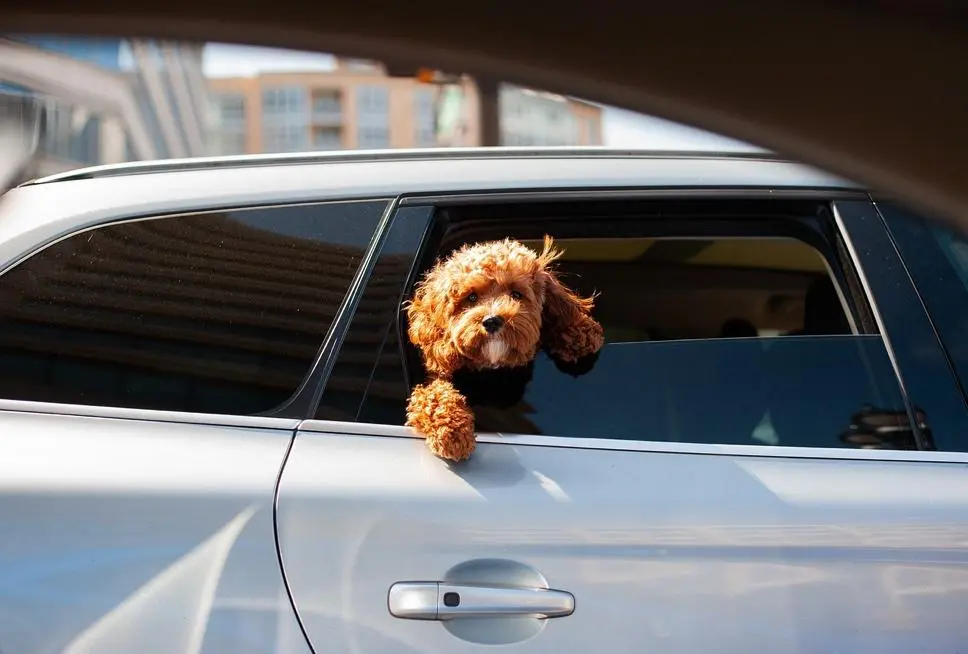
As pet owners, ensuring the safety and comfort of our furry companions during car journeys is paramount.
Whether it’s a short trip to the vet or a long road trip, taking proactive measures to secure your pets properly and minimize distractions is essential for their well-being and the safety of everyone in the vehicle.
8 Car Safety Tips for Pets
Here are some essential tips to help you travel safely with your pets in the car.
1. Secure Your Pet:
Just as you would wear a seatbelt for your safety, your pet should be properly restrained while traveling in a vehicle. Use a pet seat belt, crate, or travel carrier to prevent them from roaming around the car.
This not only reduces the risk of injury to your pet in the event of sudden stops or accidents but also prevents distractions for the driver.
2. Choose the Right Restraint:
Not all pet restraints are created equal. Ensure that the one you choose is suitable for your pet’s size and weight and that it is installed correctly according to the manufacturer’s instructions. A properly secured restraint will keep your pet safe and comfortable throughout the journey.
3. Comfort and Hydration:
Make your pet’s travel experience as comfortable as possible by providing familiar bedding or blankets in their crate or carrier. Additionally, bring along plenty of water and a portable bowl to keep them hydrated during the trip. Avoid feeding them a large meal right before traveling to prevent motion sickness.
4. Plan Regular Breaks:
Just like humans, pets need to stretch their legs and relieve themselves during long journeys. Plan for regular rest stops where your pet can get out of the car, stretch, and use the bathroom. Use these breaks to offer them water and a quick snack if needed.
5. Temperature Control:
Ensure a comfortable temperature inside the car for your pet. On hot days, use air conditioning or keep windows partially open to prevent overheating. On cold days, provide adequate bedding and avoid exposing your pet to drafts.
6. Minimize Distractions:
Pets can be curious and easily distracted, which can be dangerous while driving. Keep your pet’s attention focused on their designated area by using barriers or dividers if necessary. Avoid allowing them to ride in the front seat or sit on your lap while driving.
7. Practice Makes Perfect:
If your pet is not accustomed to car travel, start with short trips to help them acclimate to the experience gradually. Offer treats and positive reinforcement to create a positive association with traveling in the car.
8. Identification and Documentation:
Ensure your pet wears a collar with identification tags containing your contact information in case they become lost during the journey. Additionally, carry copies of your pet’s vaccination records and any necessary permits, especially if you’re traveling across state or international borders.
9. Be Prepared for Emergencies:
Pack a pet first aid kit containing essentials such as bandages, antiseptic wipes, and any necessary medications. Familiarize yourself with emergency veterinary clinics along your route in case of unexpected medical issues.
10. Never Leave Your Pet Unattended:
Never leave your pet alone in a parked car, especially during hot or cold weather. Even with the windows cracked open, temperatures inside a car can quickly become dangerous for pets.
By following these essential tips, you can ensure a safe and enjoyable journey for both you and your furry friends.
Remember, responsible pet ownership extends to all aspects of life, including traveling in the car.
With proper preparation and care, you can make every car trip with your pet a safe and memorable experience.
